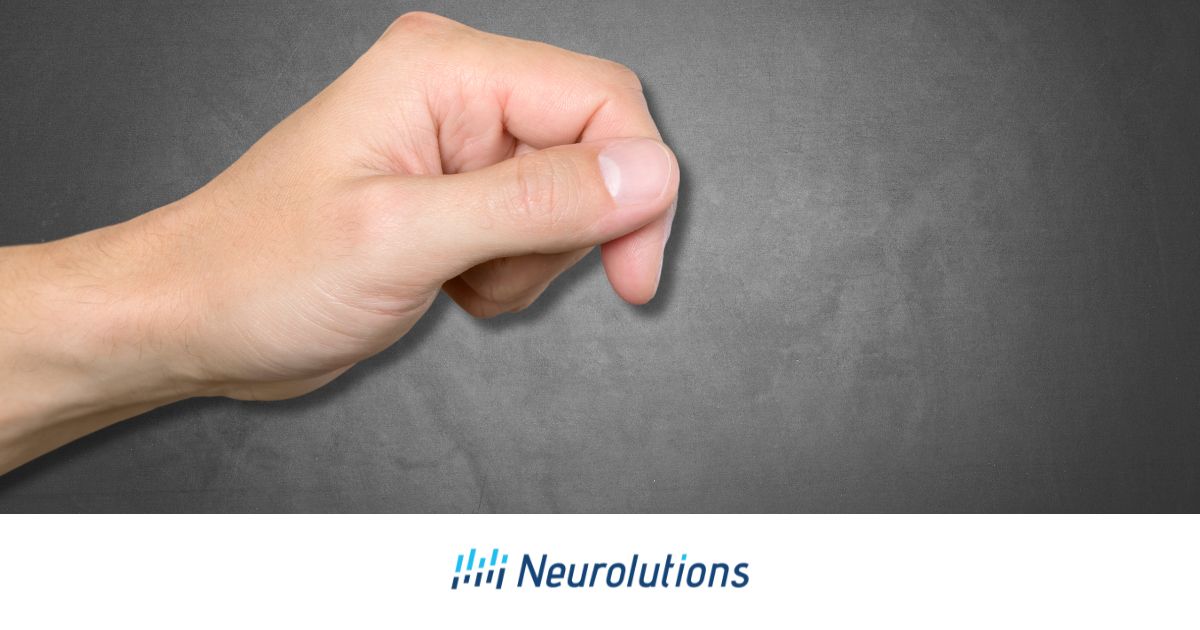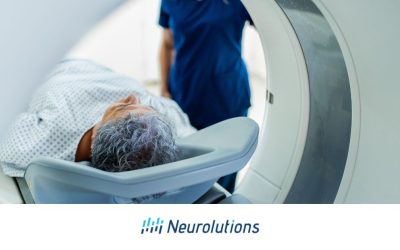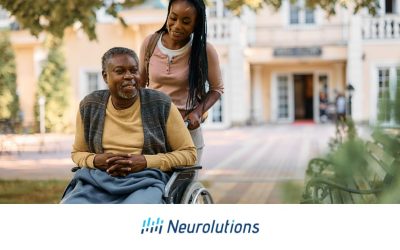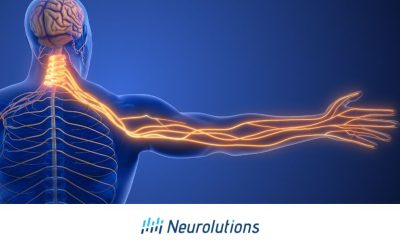Understanding Botox
Botox is a purified protein derived from natural sources that gently blocks certain nerve signals, making it effective for reducing muscle stiffness after a stroke.
Most people know Botox injections as a way to smooth out wrinkles, but it can do much more than improve appearance. When injected, it blocks nerve signals that control muscle movement, making it useful for treating medical problems.
Botox is a purified protein made by a bacterium found naturally in soils, lakes and forests, called Clostridium botulinum. While the bacterium produces several types of proteins, two—Type A and Type B—are approved for medical treatments (1, 2). Doctors can use Botox to help with muscle stiffness after strokes and other nerve-related issues. This article explores the origins of Botox and its uses in treating various health conditions beyond aesthetics.
What is Botox?
Since the 1970s, Botox has been used medically to treat conditions like spasticity, neck spasms, and even excessive sweating by blocking specific nerve signals.
Botulinum toxin, commonly known as Botox, has been used for medical treatments since the 1970s. There are several types of Botox, including three versions of Botulinum Toxin Type A and one version of Type B, all approved by the FDA (3).
Botulinum Toxin Type A (BoNT-A) is used in various forms to address both cosmetic concerns and medical issues, including spasticity caused by conditions like stroke, Parkinson’s disease, and other disorders. Spasticity is when muscles jerk or move uncontrollably because of damage to the nervous system. Botulinum Toxin Type B (BoNT-B) is typically used if a person has not responded well to BoNT-A (4).
In addition to spasticity, Botox injections can be used for several other medical conditions, including (5):
- Neck and muscle spasms
- “Lazy eye” or “crossed eyes”
- Hyperhidrosis, an excessive sweating condition
- Chronic migraine headaches
- Urinary incontinence caused by an overactive bladder
How Botox Works at the Cellular Level
Botox works by blocking the release of a chemical that helps muscles tighten, which helps to reduce muscle stiffness and spasms.
Botox is a purified protein that blocks nerve signals in muscles. Nerves will normally send a chemical called acetylcholine to make muscles contract, but Botox stops this chemical from working, helping the muscles stay relaxed.
Since Botox stops muscles from tightening, muscle weakness may be an undesirable side effect. For this reason, it’s very important to find the right dose of Botox for each individual. Achieving the right dosage effectively treats muscle spasticity, minimizing the risk of causing new muscle issues.
How Botox Helps Muscles Relax After a Stroke
After a stroke, some survivors experience muscle stiffness or spasms, making it hard to move. Botox is used to help relax these tight muscles.
Here is how botox can be beneficial for stroke survivors:
- Muscles: Botox helps relax stiff muscles, making it easier for stroke survivors to move their arms or legs.
- Nerves: By blocking the signals that cause unwanted muscle contractions and spasms, Botox can increase comfort and improve the ability to perform daily activities.
After a stroke, as muscles begin to recover strength and function, stroke survivors might experience muscle stiffness or spasms. This can make performing everyday tasks very difficult. In some cases, muscle stiffness and spasms can become so severe that they cause self-injury, and can make it difficult for a person to get into a proper position to move.
Botox can help by blocking the chemical signals between nerves and muscles that make muscles tighten or relax (6). The injection goes directly into the muscle to help stop unwanted movements. If other treatments don’t help, doctors may use Botox to manage severe spasticity in stroke survivors and individuals with other conditions.
For those who have severe muscle stiffness or spasms and haven’t found relief with other treatments, doctors often recommend an injection of Botulinum Toxin TypeA (BoNT-A) to help manage these symptoms and improve their ability to perform daily activities.
How Botox Affects Nerve Signals
Botox stops certain nerve signals that cause muscles to contract, helping reduce muscle spasms, but the effects are temporary and need repeated treatments.
Botox helps relieve muscle stiffness and spasms by stopping the nerve signals that tell muscles to tighten. The effects of Botox are temporary, and most patients may need additional injections over time. Botox effects usually last about three to four months, but as muscles adapt, the time between treatments might be longer (7). Around 6% of patients develop antibodies that make the medication stop working (8).
Fortunately, with the brain’s ability to adapt, combined with occupational and/or physical therapy (OT and/or PT), overall muscle spasticity may improve and potentially reduce the need for more Botox injections.
Botox in Stroke Rehabilitation: A Guide for Patients
Types of Botox (BoNT-A) For Treating Spasticity:
There are different types of Botox used for spasticity, and each has its own dosage requirements* and potential side effects.
There are different types of Botox used to treat spasticity, and each type has its own unique qualities and dosing instructions (9). To reiterate: It’s essential to find the correct Botox dose for each individual. The right dosage effectively treats muscle spasticity while minimizing the risk of creating new muscle issues.
- Onabotulinum Toxin A (Brand names: Botox; Botox Cosmetic; botulinum toxin).
- Possible side effects: Puffy eyelids, dry mouth, headache, tiredness, increased sweating, bruising, bleeding, pain, redness or swelling at the injection site. Serious side effects may include severe muscle weakness, trouble breathing, difficulty speaking or swallowing, and eye pain (10).
- Abobotulinum Toxin A: (Brand name: Dysport).
- Possible side effects: Spread of toxin effects, breathing difficulties, injection site pain, and headache. It may interact with cold or allergy medicines, muscle relaxers, and other medications (11).
- Incobotulinum Toxin A: (Brand name: Xeomin).
- Possible side effects: High blood pressure, nausea or vomiting, pain or bruising at injection site, and headaches. It may interact with certain medications (12).
Onabotulinum Toxin A and Abobotulinum Toxin A are used for both upper and lower limb spasticity, but IncobotulinumtoxinA is generally used for upper limb spasticity only (13).
*The dosage/unit refers to the amount of active ingredient in the Botox preparation, which helps determine how effective the treatment will be. A higher number indicates a greater concentration of the active component that works to relax muscles. This is important because finding the right dosage is key to ensuring that the treatment is effective while minimizing the risk of side effects.
BoNT-B for Spasticity:
BoNT-B is another type of Botox that works for people who don’t respond well to BoNT-A, though it may not last as long.
BoNT-B, also known as RimabotulinumtoxinB, is sold under the brand name Myobloc. BoNT-B usually needs to be injected more often because it doesn’t last as long, and it can cause the body to create antibodies that make both BoNT-A and BoNT-B less effective (14).
Managing Spasticity in Stroke Survivors with Botox
Botox injections can help reduce spasticity for a stroke survivor.
After a stroke, severe muscle spasms in the arms or hands makes everyday activities like eating or bathing very challenging. About 50% of people who have had a stroke and experienced weakness or paralysis in their hands may never fully recover their prior hand function (15). To reduce spasticity, doctors might prescribe Botox or other medications such as muscle relaxants.
Botox is also used to treat spasticity in the legs, which can make walking more challenging. A common issue is a “foot-drop” gait, where spasticity in the ankle makes walking difficult (16, 17). This can not only slow down recovery and increase the risk of falls, but it can also lead to injuries in the hips, knees, and ankles from dragging the leg. Botox injections in the lower limbs can help by (18, 19):
- Improving overall motor function and coordination needed for walking
- Restoring a more normal walking posture
- Enhancing body posture while walking, reducing pressure on the spine and hip joints
- Decreasing pressure on the feet to prevent painful calluses
Botox is strongly supported for reducing spasticity and muscle tone after stroke, but evidence for direct functional improvements, such as better upper and lower extremity limb use, is less consistent and often requires combined therapies for noticeable functional gains. For more information, visit Journal of Rehabilitation Medicine and EBRSR.com.
Combining Botox with Other Treatments for Stroke Survivors
Doctors often combine Botox with other therapies, like splinting and occupational (OT) and/or physical therapy (PT), to maximize recovery from spasticity after a stroke.
Before utilizing Botox to reduce muscle spasms, doctors often try other treatments first, like splints, braces, or medications. Botox can affect how the body processes other medicines, so it’s important to share with a doctor if things like blood-thinners, antibiotics, or muscle relaxers are already being used.
In order to help stroke survivors regain lost motor skills, a combination of therapies are often used in OT and/or PT. These may include splinting, massage, electrical stimulation, relaxation techniques, and specific exercises. These approaches aim to improve joint movement, muscle function, and skills such as self-feeding, writing, and walking up and down stairs. Engaging in therapy helps stroke survivors regain their independence and improve their quality of life.
It is considered best practice to use Botox for muscle spasms in stroke survivors as a supplement to OT and/or PT. This combination helps maximize the benefits of Botox in reducing muscle spasms and supporting overall recovery.
Holistic Approach to Stroke Recovery
Stroke survivors need a team of therapists to help them recover from both physical and mental challenges, using a mix of therapies tailored to their individual needs.
A stroke can cause brain injury that leads to weakness or paralysis, along with problems like memory loss and anxiety. A recovery team usually includes therapists for occupational, physical, cognitive, and speech therapy, plus social workers to help survivors recover as much as possible at home or in the hospital.
Management of post-stroke recovery should follow a patient-centered, collaborative approach, with physicians aligning treatment goals with patients and caregivers. The initial treatment plan should focus on a manageable set of goals, which are gradually reassessed and expanded as treatment outcomes become clearer (20).
Not all stroke survivors face the same challenges. Some may have difficulty speaking or understanding language, while others may not. The degree of paralysis or weakness, and whether it affects the arm, leg or both, can also vary. The location and severity of the brain injury play a big role in the differences. Thus, a stroke rehabilitation plan needs to be individually-tailored to meet the specific abilities and needs of each stroke survivor.
Conclusion
Muscle spasms are common in stroke survivors and can make daily activities like self-feeding and walking difficult, potentially leading to injury, chronic pain, and reduced motivation to continue daily OT and/or PT exercises.
Botox injections, carefully administered by experienced physicians, can help relieve these muscle spasms and pain. Although often associated with cosmetic procedures, Botox is also effective for treating chronic muscle spasms and pain in stroke survivors. Combining Botox with OT and/or PT and other treatments can maximize recovery and minimize the need for future injections, all while ensuring safety and improving quality of life.
References:
- Walker TJ, and Dayan SH. (2014). Comparison and overview of currently available neurotoxins. Journal of Clinical and Aesthetic Dermatology 7(2): 31-9. Webpage: https://www.ncbi.nlm.nih.gov/pmc/articles/PMC3935649/
- Walker TJ, and Dayan SH. (2014). Comparison and overview of currently available neurotoxins. Journal of Clinical and Aesthetic Dermatology 7(2): 31-9. Webpage: https://www.ncbi.nlm.nih.gov/pmc/articles/PMC3935649/
- Walker TJ, and Dayan SH. (2014). Comparison and overview of currently available neurotoxins. Journal of Clinical and Aesthetic Dermatology 7(2): 31-9. Webpage: https://www.ncbi.nlm.nih.gov/pmc/articles/PMC3935649/
- Bentivoglio AR, Del Grande A, Petracca M, et al. (2015). Clinical differences between botulinum neurotoxin type A and B. Toxicon 107(Pt A): 77-84. Webpage: https://pubmed.ncbi.nlm.nih.gov/26260691/
- Mayo Clinic. Botox injections. Webpage: https://www.mayoclinic.org/tests-procedures/botox/about/pac-20384658
- Rady Children’s Hospital San Diego [San Diego, CA]. Botox Treatment for Spasticity. Webpage: https://www.rchsd.org/programs-services/cerebral-palsy-center/services/botox-treatment-for-spasticity/#:~:text=Botox%20works%20by%20blocking%20the,the%20muscle%20contract%20or%20tighten.
- Botox Injections: Treatment, Recovery & Side Effects. (2022). Cleveland Clinic. https://my.clevelandclinic.org/health/treatments/8312-botulinum-toxin-injections
- Corsalini M, Inchingolo F, Dipalma G, et al. (2021). Botulinum Neurotoxins (BoNTs) and Their Biological, Pharmacological, and Toxicological Issues: A Scoping Review. Applied Sciences 11(19): 8849. Webpage: https://www.mdpi.com/2076-3417/11/19/8849
- Ferrari A, Manca M, Tugnoli V, et al. (2018). Pharmacological differences and clinical implications of various botulinum toxin preparations: A critical appraisal. Functional Neurology 33(1):7-18. Webpage: https://www.ncbi.nlm.nih.gov/pmc/articles/PMC5901944/
- RxList.com. Onabotulinumtoxina. Webpage: https://www.rxlist.com/onabotulinumtoxina/generic-drug.htm
- RxList.com. Dysport. https://www.rxlist.com/dysport-drug.htm#overdosage
- RxList.com. Xeomin. Webpage: https://www.rxlist.com/xeomin-drug.htm
- Ferrari A, Manca M, Tugnoli V, et al. (2018). Pharmacological differences and clinical implications of various botulinum toxin preparations: A critical appraisal. Functional Neurology 33(1):7-18. Webpage: https://www.ncbi.nlm.nih.gov/pmc/articles/PMC5901944/
- Francisco, Gerard E., Et Al. (2020) “A Practical Guide To Optimizing The Benefits Of Post-Stroke Spasticity Interventions With Botulinum Toxin A: An International Group Consensus.” Journal of Rehabilitation Medicine, vol. 53, no. 1, p. 2715. PubMed Central, https://doi.org/10.2340/16501977-2753
- Corsalini M, Inchingolo F, Dipalma G, et al. (2021). Botulinum Neurotoxins (BoNTs) and Their Biological, Pharmacological, and Toxicological Issues: A Scoping Review. Applied Sciences 11(19): 8849. Webpage: https://www.mdpi.com/2076-3417/11/19/8849
- Eschmann H, Héroux ME, Cheetham JH, et al. (2019). Thumb and finger movement is reduced after stroke: An observational study. PLoS One 14(6): e0217969. Webpage: https://www.ncbi.nlm.nih.gov/pmc/articles/PMC6561636/#:~:text=At%206%20months%20after%20severe,not%20regain%20function%20%5B3%5D.
- Franck JA, Smeets RJEM, Elmanowski J, et al. (2021). Added-value of spasticity reduction to improve arm-hand skill performance in sub-acute stroke patients with a moderately to severely affected arm-hand. NeuroRehabilitation 48(3): 321-336. Webpage: https://www.ncbi.nlm.nih.gov/pmc/articles/PMC8150539/
- Peishun C, Haiwang Z, Taotao L, et al. (2021). Changes in Gait Characteristics of Stroke Patients with Foot Drop after the Combination Treatment of Foot Drop Stimulator and Moving Treadmill Training. Neural Plasticity 2021: 9480957. Webpage: https://www.ncbi.nlm.nih.gov/pmc/articles/PMC8629651/
- Yu H-x, Liu S-h, Wang Z-x, et al. (2023). Efficacy on gait and posture control after botulinum toxin A injection for lower-limb spasticity treatment after stroke: A randomized controlled trial. Frontiers in Neuroscience 16: 1107688. Webpage: https://www.frontiersin.org/journals/neuroscience/articles/10.3389/fnins.2022.1107688/full
- Francisco, Gerard E., et al. “A Practical Guide To Optimizing The Benefits Of Post-Stroke Spasticity Interventions With Botulinum Toxin A: An International Group Consensus.” Journal of Rehabilitation Medicine, vol. 53, no. 1, Oct. 2020, p. 2715. pmc.ncbi.nlm.nih.gov, https://doi.org/10.2340/16501977-2753. https://pmc.ncbi.nlm.nih.gov/articles/PMC8772370/#t0001





